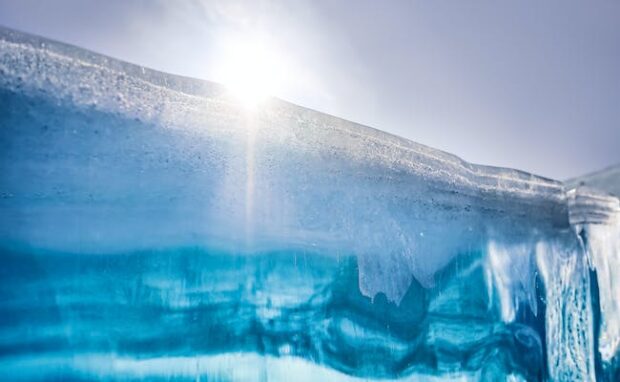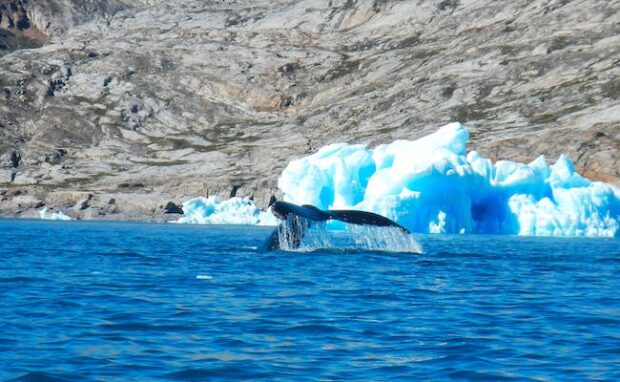Sunscreen ingredients found in Arctic snow
Ca’ Foscari University researchers discovered sunscreen ingredients found in Arctic snow. It marks a disturbing pollution trend as more contaminants appear in frozen regions. Moreover, experts fear icecaps may spread these foreign materials into the ocean as they melt due to climate change. As a result, they could dirty our waters further.
These trends show our impact on the environment. Our lifestyles leave a lasting impression on our surroundings as our refuse drifts into faraway regions. Fortunately, that shows we might turn things around if we change our ways. Positive change starts by understanding the existing damage.
This article will discuss how experts found sunscreen ingredients in the frigid far north. Later, I will share lesser-known environmental trends, such as plastic waste disrupting marine reproduction.
How did experts discover sunscreen ingredients in the Arctic?

Polar scientist Marianna D’Amico and her colleagues were analyzing the pollutants found in the Arctic glaciers of the Svalbard archipelago. They found 13 substances commonly found in sunscreen and other personal care products.
The researchers examined 13 common personal care product ingredients, such as soap fragrances and UV sunscreen filters like benzophenone-3 (BP3). In 2021, they collected 25 snow samples from five glaciers at different depths to track seasonal changes.
All but one of the frigid glaciers had higher concentrations of UV filters in snow deposited during winter than in other seasons. Also, BP3 and octocrylene were more abundant at the glacier peaks.
“For some of these chemicals, this is the first time their presence is reported in snow in Svalbard,” the Ca’ Foscari University expert said. Contrary to popular belief, they see their discovery as a positive.
Such studies will help us understand these contaminants and their origins. Consequently, they can facilitate finding ways to stop the pollution at the source.
ScienceAlert says researchers use the Chemicals of Emerging Arctic Concern (CEACs). It is a watch list of compounds and their effects on Arctic pollution.
Antarctica and Arctic CEACs are also in surface waters, seawater, wastewater streams near research stations, and snow. Moreover, they inform policy decisions in the Arctic Monitoring and Assessment Program.
Recent discoveries reveal that more pollutants like sunscreen ingredients are spreading into these regions. On the other hand, our understanding has not been keeping up.
“Yet little is known about the primary sources of contamination in remote regions and the main transport processes,” D’Amico and colleagues wrote in their paper.
Many CEACs are also outside of any international regulation. Also, scientists worry these glaciers may spread more pollutants as they melt due to climate change.
Other pollution trends

Plastic waste has also been spreading into tiny, shrimp-like crustaceans. Despite their size, they are an important food source for larger animals, such as whales.
“These creatures are commonly found on European shores, where they make up a substantial amount of the diet of fish and birds,” says ecotoxicologist Alex Ford.
“If they are compromised, it will have an effect on the whole food chain,” he added. That is why environmental toxicologist Bidemi Green-Ojo and colleagues exposed a tiny malacostracan crustacean species called Echinogammarus marinus to four chemical additives found in plastic.
“We chose these four additives because the suspected danger they pose to human health is well-documented,” stated Green-Ojo. “Two of the chemicals we investigated (DBP and DEHP) are regulated and not allowed to be used in products in Europe.”
“The other two chemicals have no current restrictions on them and are found in many household products. We wanted to test the effects these chemicals had on aquatic mating behavior,” he added.
You may also like: Light pollution sparks fear of losing dark skies
Three of these substances are in the top 30 chemicals detected in England’s surface and groundwater. Also, all tested substances could reduce the sea creatures’s mating success by shifting their behavior. Two sample chemicals, dibutyl phthalate (DBP) and triphenyl phosphate (TPHP) reduced the crustaceans’ sperm count.
“Although the animals we tested were exposed to much higher concentrations than you would normally find in the environment, the results indicate these chemicals can affect sperm count,” Ford explained.
“It is conceivable that if we did the experiment on shrimps that had been exposed for a longer period or during critical stages in their life history. It would affect their levels and quality,” he added.
Conclusion
Scientists discovered sunscreen ingredients in Arctic glaciers, adding to the growing list of pollutants. They think these substances drift with the wind to these icy regions.
Experts fear glaciers may pollute our oceans further as they melt due to global warming. Also, they are studying whether these substances have different impacts in warmer regions.
Learn more about this pollution study in Science of the Total Environment. Moreover, check out the latest digital tips and trends at Inquirer Tech.